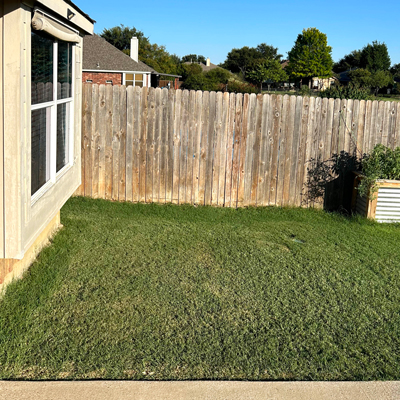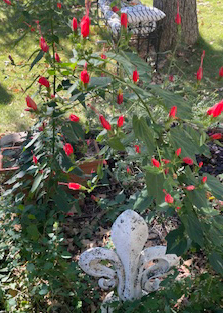Q&A – Ask Neil: November 21, 2024
(Please read these instructions carefully.)
Before you post your question, please look at recent issues to see if someone else has already asked it. You might find your answer there.
How to submit your question…
(Note: You may need to allow a pop-up window to come up in order to get the link for sending your photo(s). If you have already submitted your question and didn’t see the pop-up window, please click here.)
• Click the link provided below to post your question. After you submit your question, a new window will pop up giving you the address to which you can e-mail a SHARP, HIGH-RESOLUTION PHOTO to accompany your question. Please DO NOT SEND THUMBNAIL PHOTOS in case I need to zoom in to see things.
• Click here to post your question.
• Please ONLY POST YOUR QUESTION ONE TIME. We can only accept a set number of questions each week, and when we get duplicates it costs other people their chances.
• One question per reader, please.
• Please use this only for posting questions – not for standard emails.
• Watch for your answer in the following week’s e-gardens.
• I choose those of greatest general interest. For example, plant IDs seldom make the cut.
• I must have your first name or initials.
• I must have your city or county. (Texas is a very large state.)
QUESTION 1
WHAT PERENNIALS DO YOU SUGGEST FOR A COLORFUL GARDEN OUTSIDE MY DINING ROOM WINDOW?
Question: What perennials would you suggest for a colorful garden outside my dining room window, south facing and full sun? I don’t want to block the view. Roughly 8×10 ft. (Your book has been super helpful.) Austin C., Argyle.



Answer: Lovely setting! I’m glad you’re finding my book (hopefully Lone Star Gardening) helpful. I spent 6 long weeks, 7 days a week writing the Perennials chapter. One week of it was dedicated to the chart at the end of the chapter where I list the 120 best perennials for Texas and gave them my overall ratings. I would suggest the ones I rank as best for your consideration.
But I have several thoughts that are very important. Please read them and think things through carefully.
• Your home and landscape are very neatly maintained. You will want this garden to be the same. Perennial gardens can be challenging, as I’ll explain.
• Unrelated comment: Designing a garden without any discussion is a bit like designing a room’s interior out of the blue. (It’s almost impossible.) You need a landscape planner to sit with you and discuss this area so that you can think about it for a few weeks.
• My suggestion would be to keep it very simple. Perennial gardens are not simple. Remember that almost all types of perennials will be in peak bloom for only 2-3 weeks. There are a few exceptions, but they are rare. The rest of the 52 weeks each type will be less than spectacular. Therefore, you have to have an assortment of types that bloom in a sequence. That means staging of colors and heights. It also means figuring a way to conceal dying foliage when the daffodils or mums die back to the ground. And how does it all look during the dormant winter? You need a few evergreen shrubs to anchor it – to tie things together visually.
• If it were my 8×10-ft. area, I would have a bed along a couple of the edges. I would have a few small shrubs and maybe an evergreen vine such as Carolina jessamine. I would count on annuals for most of my color since they bloom for 3 or 4 months or longer vs. 2 or 3 weeks. I might even just plant the annuals in large, decorative pots to highlight them even more and use a low groundcover around them. Nothing more. Just simplicity. I fear that perennials will wear you out.
Having said all of that, I just found your third and most beautiful photo looking out across the lake. Think about one more thing – are you sure you want to divide up your yard visually? By constructing any kind of flower garden up in that rectangle you’ll draw attention to it. You really want to use your landscape as a funnel to draw attention across the lawn and onto the lake. All the more reason to use large, lovely containers to frame the view. That’s where I’d put my color.
QUESTION 2
WHAT CRAPE MYRTLE VARIETIES HAVE SURVIVED THE HARSHEST WINTERS?
Question: What crape myrtle varieties have survived the harshest winters? I’d like two tree-form plants to 25 ft. tall for shade and 12 miniature shrubs (3 ft. maximum) to maintain sight lines, all on the west side of my house. The Hardiness Zone Map says Cooke County is Zone 7, but I’m wondering if we’re Zone 6. Karen R., Cooke County.
Answer: This is going to sound like I’m taking the easy way out by referring you to a website, but since I wrote most of this website I’m not going to apologize. It’s from our Crape Myrtle Trails of McKinney, and this is the list of the varieties we recommend most highly. You’ll be looking at the first and last groups.
I have to tell you that the Petite series have always been my favorites for dwarf types. They were introduced in the early 1960s, and to my opinion, nothing better has come along yet. I love ‘em.
As for the taller ones, Arapaho is gorgeous but hard to find. Red Rocket was developed in Stillwater, Oklahoma. (Colder than Cooke County!) Twilight is long-proven and from Grayson County (next door to you). I have Glendora White in Collin County and have never had a problem with cold. However, it’s also hard to find. Stay away from Natchez, Tuscarora, and Muskogee since they freeze to the ground so often in your area.
QUESTION 3
WHY DID FRUITLESS MULBERRIES LOSE THEIR LEAVES IN OCTOBER?
Question: My three fruitless mulberries all lost their leaves in October. Is this because we had no rain during that time? They usually turn when temperatures drop. Betty G., Glen Rose.
Answer: You hit it right on the head. Many of our trees across Texas lost their leaves unusually early this fall because of the hot, dry weather we experienced in September and October. Large-leafed, fast-growing trees like your mulberries are always especially vulnerable because they use so much water just keeping themselves going. Dropping their leaves is a way of cutting their responsibilities.
QUESTION 4
WHY NO HUMMINGBIRDS THIS YEAR?
Question: I have 16 Turk’s caps on 1.5 acres. They all are in full bloom. Normally the hummingbirds are very active around them, but this year they have been absent. Why would that be? MAC, Tarrant County.

Answer: I’m just one guy who’s been watching Turk’s caps in North Central Texas, but it seems like they have been slower to flower this year than usual. Again, that is probably due to the heat and drought. Without flowers earlier in the fall, the hummingbirds probably passed by and didn’t have Turk’s cap flowers to attract them.
Our pastor joins me on my KLIF radio program most Saturdays. I asked him last Saturday and Pastor Tommy Brumett (First United Methodist Church, McKinney) said his population of hummingbirds was down significantly this year, as was the production of flowers on his Turk’s caps.
QUESTION 5
WHY ONLY THREE SPIDER LILY FLOWERS THIS YEAR?
Question: Normally in late summer and early fall my spider lilies bloom. I have hundreds that bloom successfully. I’ve divided them over a period of 35 years. This year only 3 bloomed and about as many have foliage. What could have happened? Rose L., Arlington.
Answer: It’s not unheard of for spider lilies to sit out a year without blooming, especially if anything in their environment has changed dramatically. (Fill soil over them, recent dividing and transplanting, etc.) Mine flowered normally this fall, but a neighbor who has many more bulbs had very few blooms. His yard is not irrigated, and I do wonder, as with previous answers, if our summer and fall droughts might not have had something to do with it. Honestly, I’m more concerned about the fact that you don’t have leaves. All I can suggest is wait it out and see what transpires next year.
QUESTION 6
IS IT BENEFICIAL TO LET BERMUDA GO TO SEED?
Question: I keep my bermuda lawn cut to the height you recommend, but for various reasons it gets long once or twice a year. When it does, it goes to seed. That got me to thinking: Is there a time when it’s beneficial to let bermuda go to seed? Kevin A., Van Alstyne.
Answer: Bermuda sends up its seed heads in early summer. When it does, it seems to grow very rapidly. You’re not necessarily letting it get tall. It’s just outgrowing your normal frequency of mowing. You want bermuda to stay vegetative (leaves not seeds), so the only suggestion I would have would be to mow a little more often and apply an all-nitrogen fertilizer when it starts to send up the flowers/seed heads. Nitrogen promotes leaf growth.
QUESTION 7
WHAT SHOULD I DO NOW WITH MY CRAPE MYRTLES?
Question: Somebody pruned my crape myrtle shoots from which I was going to develop trunks for new trees. (I had previously treated for bark scale.) What advice do you have for me? Willie S., Polk County.


Answer: Sadly, you’re going to have to start completely over by cutting everything back to about 1 inch from the ground. That includes all the new shoots, the big, frozen trunks – everything. New growth will shoot up in the spring. You may need to put some kind of stakes or restraint to keep that person from repeating the pruning next year. Good luck with it!
